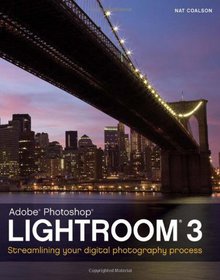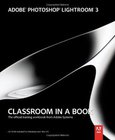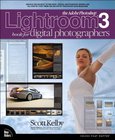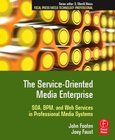Lightroom 3
Streamlining Your Digital Photography Process

Book Details:
| Publisher: | Wiley |
| Series: | Wiley |
| Author: | Nat Coalson |
| Edition: | 1 |
| ISBN-10: | 047060705X |
| ISBN-13: | 9780470607053 |
| Pages: | 400 |
| Published: | Jul 06 2010 |
| Posted: | Nov 19 2014 |
| Language: | English |
| Book format: | |
| Book size: | 27.27 MB |
Book Description:
"I've worked my entire adult life in digital imaging, from managing high-volume production departments to running my own photography and printing businesses. And for many years, I've been teaching photographers how to be self-sufficient when it comes to working with their digital images. Having used all major image editing software released over the past twenty years, I now choose to use Lightroom because it allows me to work quickly, helps me deal with large numbers of images and lets me get back to enjoying the creative aspects of photography. From my experience, I know how hard it can be to learn new ways of doing thingsespecially computer stuff. Unfortunately for a lot of photographers, struggling with digital processing can take the fun out of photography. Trying to figure out the intricacies of file formats, resolution, color management, etc., and even simply where to put all the files can be daunting tasks. Worse yet, sometimes it's hard just to know the right steps to get the best quality from a single photo! It's my mission to ease your pain; to show you that you really can be in control of your entire imaging process, and help you develop a personalized workflow that fits your style and needs. My students frequently tell me how liberating this is: to comfortably handle all the files coming off the camera and residing on hard disks, to work methodically through a known sequence of steps and to produce finished pictures that you're proud to show other people. This is at the heart of the photographer's experience, and I want you to know this sense of confidence and capability. I've taught large groups and individual photographers alike. Over the years I've learned where people get stuck. I understand the pitfalls new users face when first starting to use Lightroom as well as the concerns of more experienced users looking for ways to tweak their workflow for better performance. I want to help you overcome these challenges. My goal for this book is to teach you to effectively use Lightroom 3 as quickly and easily as possible. My writing has been heavily influenced by my experiences working with clients and students, and I've approached the content of this book as I would tutor someone in a one-on-one training session. The order in which concepts are presented and the emphasis I give to certain aspects of the workflow are unique among books of its kind. We'll start by reviewing some important, basic principles, such as working with Lightroom catalogs, the Lightroom workflow, color management, and an introduction to Lightroom 3's updated tools and screen interface. From there, we jump right in to importing images into Lightroom. This is followed by a step-by-step editing tutorial that will make your work much easier. Then we move on to in-depth explanations of how to perfect each photo for tone, color, contrast, sharpness and much more. After a detailed look at exporting images out of Lightroom, the next three chapters deal with presenting your work to others with prints, Web sites and slideshows. Finally, we'll wrap up with an in-depth look at advanced techniques for integrating Lightroom with other software. The material presented in this book is appropriate for digital photographers working in all disciplines, at all skill levels. The information and tutorials are applicable to every kind of photography: from weddings and portraits to fine art landscape work, everyone can learn to streamline their digital photography process using Lightroom 3." Nat Coalson Conifer, CO 2010 Ten Lightroom 3 Tips for from Author Nat Coalson Whether youre new to Lightroom or have been using it for a while, my new book, Lightroom 3: Streamlining your Digital Photography Process can help you master the tools, techniques and workflows to get the most from your photography with the least amount of effort. Below are some of my top tips for a solid foundation in Lightroom, all of which are covered in more detail in the book: Top 5 tips if youre new to Lightroom Lightroom uses a database, called a catalog, to manage your image files. When you import photos into Lightroom, the image files are not stored in the catalog. Lightroom simply references theoriginal files on your hard drive and creates links to them within the catalog. (However, all the work you do to photos is stored within the catalog.) If you need to move, rename or delete photos after importing them into Lightroom, do it from within Lightroom (not using the Mac Finder or Windows Explorer). This ensures that the links in the Lightroom catalog will remain up-to-date with the actual files on the hard drive. Break down your workflow into distinct tasks: import, edit, Develop, export, etc. Following a consistent sequence of steps will make your work go much quicker. Lightroom provides loads of time-saving features to automate and speed up your workflow. Most important are presets and templates. Generally speaking, presets store settings and templates store formatted layouts. Get in the habit of setting up your own presets and templates for any settings that you will use frequently. Be sure to make frequent backups of your Lightroom catalog and image files; ideally, after every work session. (You will most likely only need to keep the most recent couple of catalog backups.) Top 5 tips if youve been using Lightroom for a while The Import process has been entirely revamped and streamlined in Lightroom 3. The new Import window provides more functionality and is easier to navigate. Maybe most importantly, you can now save Import presets! If you perform many imports using the same settings, this will dramatically speed up your import workflow. The processing in Lightroom 3 is built around a new Process Version, which offers notably better image quality and speed when working with your photos. New photos imported into Lightroom 3 will automatically use the new Process Version (2010). Photos already in the catalog will retain their original Process Version (2003). You can update older photos to use the new Process Version, which will allow you to extract even better quality from those photos. After updating photos to the new Process Version you will likely need to go back and fine tune the Develop settings for those files (especially sharpening). Lightroom 3 offers new and improved sharpening algorithms with a greater degree of control. One important point to note is that the Amount adjustment generally applies stronger sharpening than in previous versions, so now, you probably will use lower values for Amount. Lightroom 3s updated Noise Reduction (NR) controls are also vastly improved over previous versions; so much that you may no longer need any specialized NR software for the majority of your photos. Luminance noise reduction, in particular, lets you apply much stronger reduction amounts without adversely affecting important image detail. If youve saved Develop presets using adjustments for sharpening, noise reduction and vignetting you should revisit those settings and consider making a new preset based on the changes in the new Process Version. Before & After Examples Example 1. This example shows how you can dramatically improve a photo using just a few controls in the Basic panel. I adjusted White Balance, Exposure, Blacks and Brightness. Hasselblad H4D-40 Hasselblad 35-90 f/4-5.6 1/45 sec at f/11, ISO 100 Example 2. For this photo, I used Lightrooms adjustment brush tool to selectively dodge and burn (lighten and darken) specific areas of the photo.
Download Link:
Related Books:
Adobe Photoshop Lightroom 3
Classroom in a Book
Serious digital photographers, amateur or pro, who seek the fastest, easiest, most comprehensive way to learn Adobe Photoshop Lightroom 3 choose Adobe Photoshop Lightroom 3 Classroom in a Book from the Adobe Creative Team at Adobe Press. The 10 project-based lessons in this book show readers step-by-step the key techniques for working in Photoshop Lightroom 3. Photoshop Lightroom 3 delivers a complete workflow solution for the digital photographer. Readers learn how to manage large volumes of digital photographs, work in a non-destructive environment to allow for fearless experimentation, and perform sophisticated image processing tasks to easily produce good-looking pictures and polished presentations for both web and print. The newly expanded vers...
The Adobe Photoshop Lightroom 3 Book
For Digital Photographers
Since Lightroom first launched, Scott Kelby's The Lightroom Book for Digital Photographers has been the world's #1 best-selling Lightroom book. In this latest version for Lightroom 3, Scott uses his same step-by-step, plain-English style and layout to make learning Lightroom easy and fun. Scott doesn't just show you which sliders do what. Instead, by using the following three simple, yet brilliant, techniques that make it just an incredible learning tool, this book shows you how to create your own photography workflow using Lightroom: 1) Scott shares his own personal settings and studio-tested techniques. He trains thousands of Lightroom users at his "Lightroom Live!" tour and knows first hand what really works and what doesn't. 2) The enti...
Black and White
In Photoshop CS3 and Photoshop Lightroom
Black and white photography has come a long way in the digital world. Feeling overwhelmed by the endless conversion options in (and around) Photoshop, Lightroom and beyond? If so, you are not alone, and this is definitely the book for you!In this thoroughly up-to-date book that covers all of the new features of Photoshop CS3 and Lightroom, you'll learn how to use methods within an application or raw converter, scripts, plug-ins, and more. Leslie Alsheimer and Bryan O'Neil Hughes show you everything you need to know to uncover the secrets to successful black and white conversion and printmaking. Let the stunning images (presented in both color and black and white) show you just what is possible when you master these powerful tools.Bryan O'Neil Hughes ...
2007 - 2021 © eBooks-IT.org



